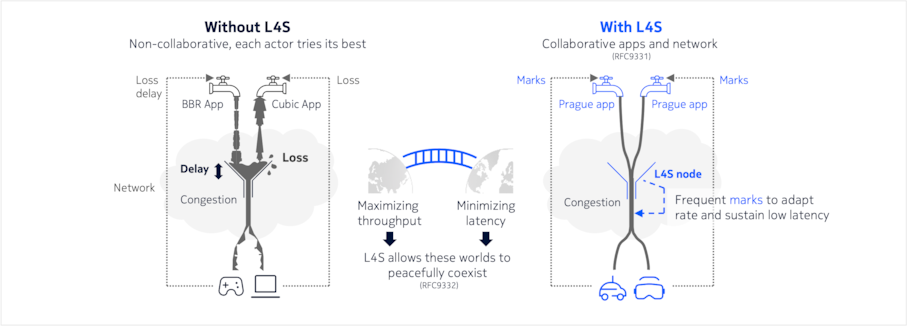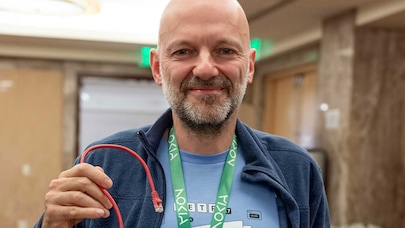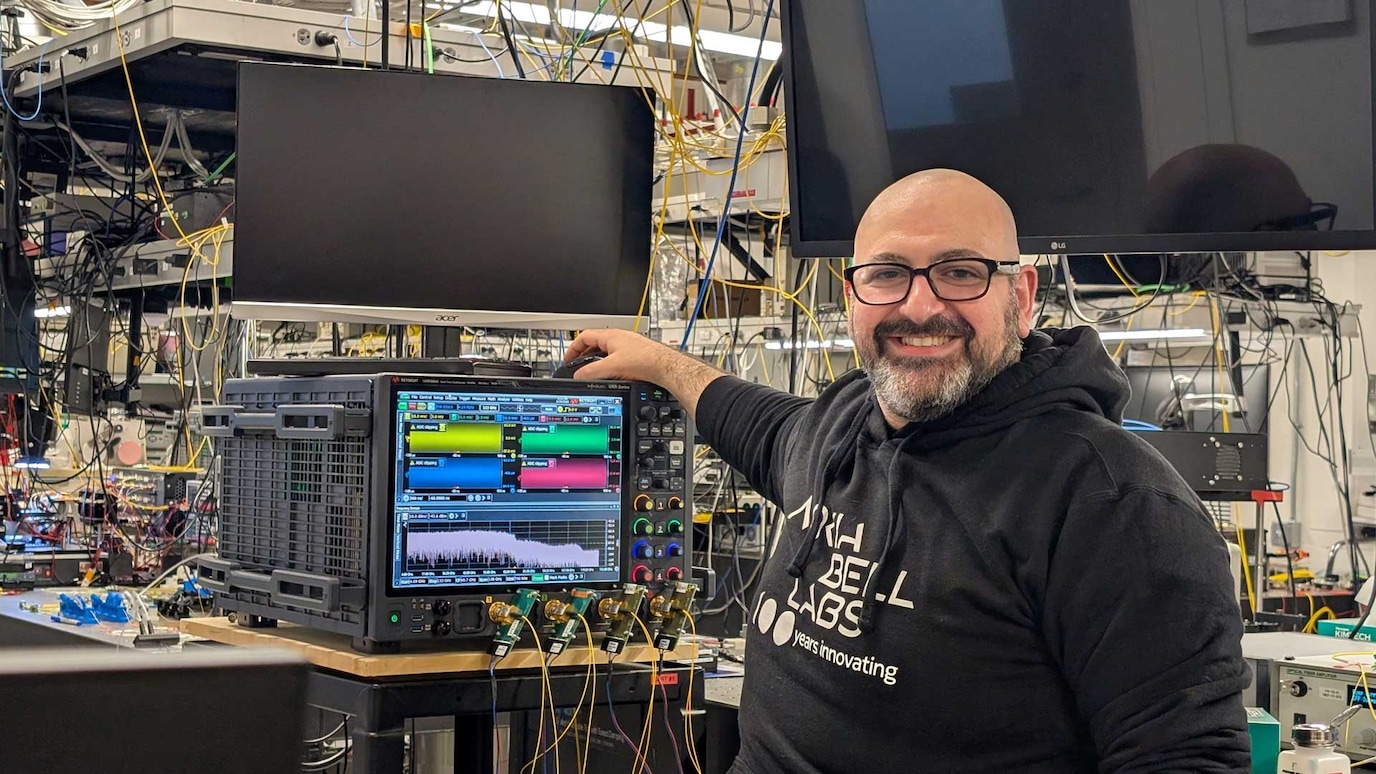Project overview
In January 2023, the IETF granted RFC status to three L4S documents. It was the result of years of pioneering research by Koen De Schepper’s team at Nokia Bell Labs, in collaboration with BT and Simula.
L4S stands for Low Latency, Low Loss, Scalable throughput. It drastically reduces latency experienced by packets traveling across the Internet.
L4S is also a key component of UNEXT, a new Nokia Bell Labs research initiative that will transform the network into a self-managing, interactive operating system that will break down barriers that have traditionally prevented network elements from interoperating.
End-to-end latency is the summation of three different factors: propagation, interface and queuing delay. L4S tackles the single biggest – and most often overlooked – source of latency and latency variation or jitter: queuing delay.
Queuing delay happens when packets wait idly in buffers across the network, for instance in routers and modems, before being forwarded. As users and bandwidth-intensive applications send more and more traffic through the network, these queued data packets cause network links to get “clogged". Packets in that congested pipe take longer to reach their destinations, and some packets even get lost in route when the buffer overflows.
Large and varying delays cause videos to stall, people to start talking over one another in videoconferencing, or frames to be skipped in cloud-gaming applications. In more futuristic applications, such as remote-controlled drones, the slightest delay variation could cause drones to crash. Any such real-time application greatly benefits from an end-to-end latency that’s not only low, but consistently low. And this is what L4S enables.
The L4S magic
Today’s applications try to “sense” what data rate they can send through the network, using congestion-control algorithms that adjust their sending rate based on the number of packets that are dropped and the observed delay in the network. These classic congestion-control algorithms require large buffers and delay in the network to run fluidly. L4S removes the need for big buffers. Nokia Bell Labs has invented the crucial components to kick off L4S. The TCP-PRIme congestion-control algorithm removed the need for a queue, and the related DualPI2 network concept enabled compatibility with the classic Internet. Nokia Bell Labs has been one of the driving forces behind the effort at the IETF and has also contributed the first open-source implementation of the new congestion-control algorithm, called TCP Prague.
L4S repurposes unused bit combinations in the IP header, the so-called Explicit Congestion Notification or ECN bits, enabling an optimal collaboration between the L4S Prague application on the one hand, and the network on the other. This collaboration avoids queue build-up within the network, reducing network queuing delays to insignificant near-zero values. As L4S works on the IP layer, it is therefore technology agnostic and can be applied to any communication technology whether it is 5G, WiFi, cable or fiber networks.
L4S enables real-time applications to always enjoy a low latency, no matter how busy the network is.
L4S also resolves another issue with standard congestion controls. It provides a scalable control signal that can control rates from practically zero up to infinite throughputs. Besides scaling for throughput, L4S also provides the means to make low latency deployments scale toward the whole Internet, as networks don’t need to guarantee the required throughput to support low latency. With L4S, application rates can be controlled without latency or loss to match the network capacity.
Real-time applications
L4S will create a wide variety of use cases. An operator will be able to tele-operate a crane in a port without any disruption and with maximum situational awareness. Kids will be able to play their games smoothly in the cloud over any network. And XR headset designers will have much more design freedom.
Nowadays headsets are still bulky as all processing needs to happen on the device itself. But as soon as the network can guarantee a low latency in all conditions, whether at home or on the move, then most of the processing can be offloaded to the cloud. New XR headset designs inspired by regular glasses come within reach.
Spearheading standardization to enable global adoption
Nokia was the first company to globally demonstrate network support for L4S in a proof-of-concept on its Nokia WiFi beacons back in 2019 during the Broadband World Forum. Since then, L4S has received broad industry support. Apple built beta support for L4S into iOS 16 and macOS Ventura.
During its Worldwide Developer Conference in 2022 and 2023, Apple demonstrated to its developer community how they can benefit from the technology. In 2022, L4S was adopted in 3GPP 5G-Advanced Release 18 to support XR over 5G RAN networks. CableLabs has included L4S in the low latency DOCSIS standard. At the 2022 and 2023 interop-events in Philadelphia, Denver and London, communications and Internet-services heavyweights, including Comcast, Charter, NVIDIA, Apple and Google, collaborated to test the end-to-end performance of L4S.
References
Nokia Bell Labs (co-)authored all the fundamental technical developments at the IETF
- RFC 9330: L4S Internet Service: Architecture
- RFC 9331: The ECN Protocol for L4S
- RFC 9332: DualQ Coupled AQM for L4S
Nokia Bell Labs contributed to these L4S open-source software components
- linux/sch_dualpi2.c at testing · L4STeam/linux (github.com)
- linux/tcp_prague.c at testing · L4STeam/linux (github.com)
- L4STeam/linux: Kernel tree containing patches for TCP Prague and the dualpi2 qdisc (github.com)
Publications













